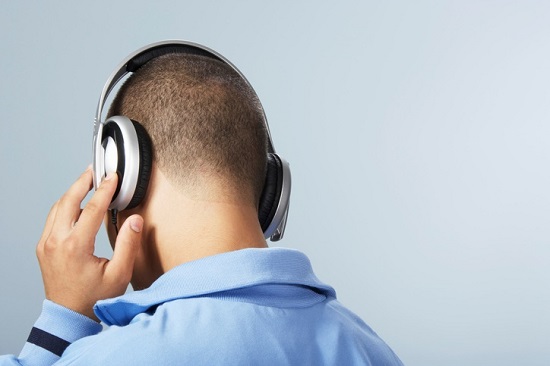
If you suspect hearing loss only happens to the elderly, you will probably be surprised to learn that today 1 out of every 5 teenagers has some extent of hearing loss in the US. Furthermore, the rate of hearing loss in teenagers is 30 percent higher than it was in the 1980s and 1990s.
It should come as no great surprise then that this has captured the attention of the World Health Organization, who as a result released a report notifying us that 1.1 billion teens and young adults worldwide are at risk for hearing loss from dangerous listening habits.
Those unsafe habits include going to noisy sporting events and concerts without earplugs, along with the unsafe use of headphones.
But it’s the use of headphones that may be the greatest threat.
Reflect on how often we all listen to music since it became transportable. We listen in the car, at work, at the gym, and at home. We listen while out for a walk and even while falling asleep. We can integrate music into nearly any aspect of our lives.
That quantity of exposure—if you’re not cautious—can gradually and quietly steal your hearing at an early age, leading to hearing aids down the road.
And given that no one’s prepared to give up music, we have to find other ways to protect our hearing. Fortunately, there are simple preventative measures we can all adopt.
Here are three vital safety tips you can make use of to preserve your hearing without compromising your music.
1. Limit Volume
Any sound louder than 85 decibels can trigger permanent hearing loss, but you don’t need to invest in a sound meter to measure the decibel level of your music.
Instead, a useful rule of thumb is to keep your music player volume at no more than 60 percent of the max volume. Any higher and you’ll probably be over the 85-decibel threshold.
In fact, at their loudest, MP3 music players can generate more than 105 decibels. And since the decibel scale, like the Richter scale, is logarithmic, 105 decibels is approximately 100 times as intense as 85.
Another tip: normal conversation registers at about 60 decibels. So, if while listening to music you have to raise your voice when communicating to someone, that’s a good signal that you should turn down the volume.
2. Limit the Time
Hearing damage is not only a function of volume; it’s also a function of time. The longer you expose your ears to loud sounds, the greater the damage can be.
Which brings us to the next rule of thumb: the 60/60 rule. We previously recommended that you keep your MP3 player volume at 60 percent of its maximum volume. The other component is making sure you limit the listening time to under 60 minutes a day at this volume. And keep in mind that lower volumes can handle longer listening times.
Taking regular rest breaks from the sound is also important, as 60 decibels without interruption for two hours can be much more damaging than four half-hour intervals distributed throughout the day.
3. Pick the Right Headphones
The reason most of us have a hard time keeping our MP3 player volume at under 60 percent of its maximum is a consequence of background noise. As environmental noise increases, like in a congested gym, we have to compensate by increasing the music volume.
The solution to this is the use of noise-cancelling headphones. If background noise is lessened, sound volume can be limited, and high-quality music can be enjoyed at lower volumes.
Low-quality earbuds, alternatively, have the twin disadvantage of being more closely to your eardrum and being incapable of decreasing background noise. The quality of sound is compromised as well, and coupled with the distracting external sound, increasing the volume is the only method to compensate.
The bottom line: it’s well worth the money to spend money on a pair of high quality headphones, ideally ones that have noise-cancelling capabilities. That way, you can adhere to the 60/60 rule without compromising the quality of your music and, more significantly, your hearing later in life.
